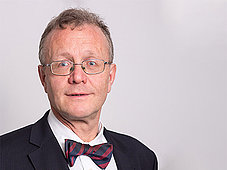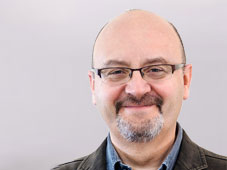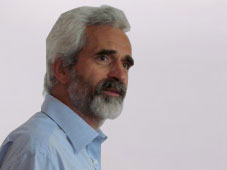Friday, June 26th, 2020 | 1pm – 5pm
Be part of the CADFEM Online Technology Day E-Motors
The development of electric motors is a highly complex procedure. To meet this challenge, there is a need for innovative solutions. Join us and be part of the CADFEM Online Technology Day E-Motors to learn and to discuss the latest design trends for traction machines.
Registration
Please click here and fill in the registration form. The event is free-of charge.
Agenda
Friday, June 26th, 2020 | 1pm – 5pm
| 1.00pm – 1.10pm | Opening |
| 1.10pm – 2.10pm | Univ. -Prof. Dr. phil. Dr. techn. habil. Harald Neudorfer, TU-Darmstadt und TU-Wien, AUT Innovationen bei elektrischer Traktionsmaschinen für Straßen- und Schienenanwendungen [German] |
| 2.10pm – 2.25pm | Q&A |
| 2.25pm – 2.40pm | Break |
| 2.40pm – 3.40pm | Dr. Mircea Popescu, Motor Design Ltd., Wrexham, UK Electrification: Need for innovative solutions in electrical machines for automotive traction units [English] |
| 3.40pm – 3.55pm | Q&A |
| 3.55pm – 4.10pm | Break |
| 4.10pm – 4.45pm | Dr. Martin Hanke, CADFEM GmbH, Berlin, GER Loss analysis in Hairpin Windings within the Ansys E-Machine Simulation Framework [German] |
| 4.45pm – 5.00pm | Q&A |

Abstract
Elektrische Traktionsmaschinen und deren Integration in elektrisch angetriebenen Straßen – und Schienenfahrzeugen sind für den Erfolg der E- Mobilität ein wesentlicher Baustein. Aktuell werden verschiedene Antriebskonzepte und Maschinentopologien verwendet. Gerade in den letzten Jahren sind, vor allem getrieben durch die E- Mobilität auf der Straße eine Vielzahl von Innovationen entwickelt worden. Die elektrischen Maschinen sollen leichter, effizienter, kleiner und kostengünstiger werden. Auch durch die zu erwarteten hohen Stückzahlen bei zukünftigen E- Personen- und E- Lastkraftwagen werden neue Fertigungstechnologien und Kühlkonzepte entwickelt und in der Serie eingesetzt. Die Meinung vor einigen Jahren, bei der E- Maschinen werden keine neuen Akzente gesetzt hat sich als nicht richtig erwiesen. Gerade durch den Schub der E- Mobilität werden in vielen Instituten weltweit und auch in den Forschungs- und Entwicklungsabteilungen in der Automobilindustrie innovative Konzepte im Bereich der Kühlung, der Effizienzsteigerung, Verwendung neuer Materialien aber auch Kostenreduzierungen vorangetrieben. Weiters werden auch derzeitige Problemfelder wie Lagerströme, Geräusche und hohe Spannungsanstiegsgeschwindigkeiten bei Wechselrichteransteuerungen kurz angesprochen.
Der Vortrag soll einen kleinen Einblick in die verschiedenen Topologien der E- Maschinentechnologie und deren zukünftigen Entwicklungen vor allem für die E- Mobilität geben.
Vita
Prof. Neudorfer war von 1982 bis 2001 im Bereich Antriebstechnik von Schienenfahrzeugen in der Konstruktion und Berechnung tätig. In dieser Zeit studierte und promovierte er
an der TU Wien Elektrotechnik und danach an der Universität Klagenfurt Ingenieurpädagogik.
Von 2001 bis 2006 war er als Leiter der Abteilung E-Drive Powertrain bei der Daimler AG in Stuttgart tätig. Nebenbei wurde er an der TU-Darmstadt für das Gebiet Elektrische Maschinen und Antriebe mit dem Thema „Weiterentwicklung von elektrischen Antriebssystemen für Elektro – und Hybridstraßenfahrzeuge“ habilitiert.
Anschließend war Prof. Neudorfer von 2006 bis Ende 2019 technischer Leiter und Prokurist der Firma Traktionssysteme Austria (GmbH) in Wiener Neudorf (Österreich). Ferner übt er seit dem Jahre 2000 die Tätigkeiten des Allgemein beeideten und gerichtlich zertifizierten Sachverständigers und des Staatlich befugten und beeideten Ziviltechnikers für Elektrotechnik aus. Seit über 20 Jahren lehrt er an der Technischen Universität in Wien und an der Technischen Universität in Darmstadt auf dem Gebiet der elektrischen Antriebstechnik für Schienen – und Straßenfahrzeuge. Außerdem hält Prof. Neudorfer seit dieser Zeit Fachseminare in der Automobilindustrie und deren Zulieferfirmen ab.

Abstract
Transport electrification is seen as one of main solutions to reduce global CO2 emissions and increased demand of mechanical energy can be provided by electrical energy. The best energy conversion systems are undoubtedly the combination: electrical machines + power electronics + batteries. The increasing demand of full electric vehicles arises specific challenges in terms of design for manufacturing, low weight, material costs and material supply chain. There is a strong interest to reduce the volume and cost of active materials in propulsion motor technologies beyond their current state-of‐art, with a strong focus on industrial feasibility for mass production. Potential solutions include increased motor speeds and higher pole numbers and/or the adoption of rare earth free typologies such as reluctance (switched and synchronous) and induction machines. As there can be significantly different usage and performance requirements across e-mobility applications adopting a common standard of motor design is unlikely to yield the optimum in terms of overall system efficiency and electric vehicle range. These considerations will be briefly discussed and compared.
Vita
Mircea is the Chief Technology Officer at Motor Design Ltd. He has more than thirty years of engineering experience. Earlier in his career, he was with Helsinki University of Technology (now Aalto University) in Finland and with the SPEED Lab at University of Glasgow, UK. Mircea has published more than one hundred papers and his publications have received three IEEE best paper awards. His consultancy contributions for industry are incorporated in many state-of-the-art products.
Current major projects include electrical machines and drives for hybrid/electrical vehicles, and formula-e racing cars. An IEEE Fellow, Mircea is the Past Chair of the IEEE Industry Application Society (IAS) Electrical Machines Committee and IAS Prominent Lecturer.

Abstract
The Ansys Framework for the analysis of electric machines connects tools for the design phase, the detailed analysis phase and the system simulation. In this paper we want to highlight a special aspect of the analysis phase: eddy current losses in hairpin end windings. High speeds and even higher switching frequencies require special attention. To model those losses as a correct eddy current representation requires accurate resolution of thin layers at the surface of the hairpin wires. A number of approaches to solve this problem will be presented
- It is possible to model a periodic sector of such a machine using inflation layers for the windings and meshing the complicated air geometry in the space between the individual wires. The outstanding meshing features of Ansys Workbench allow to use Ansys Mechanical for this approach. The user has to pay for that with good knowledge of scripting and a couple of hours calculation time.
- If the machine is divided into the active part (nonlinear, rotating, mainly 2D) and the end winding part (linear, stationary, complicated 3D geometry) a separate analysis can save huge amounts of resources. If the analysis gives the impedance (inductance plus resistance) of the end winding the main analysis can be done in 2D.
Several methods to obtain the values of that matrix elements are presented and compared from numerical point of view including:
- Ansys Maxwell 3D is used to extract losses and flux linkages to obtain the impedance matrix from a static or eddy simulation in T-Omega approach.
- Ansys Mechanical uses the A-Phi potential formulation. Thus, the induced voltages' real and imaginary parts deliver frequency dependent impedance values.
- Ansys Q3D allows to find frequency dependent impedance values from interpolation between static and high frequency limits.
- Biot-Savart’s principle allows to calculate the static inductance from the current densities in the wires.
2D transient simulation with Ansys Maxwell allows direct inclusion of diagonal elements of the impedance matrix. The complete matrix can be included with Circuit Modeler, however. In case of many windings being connected in different branches the inclusion is done creating the netlist directly via scripting.
Vita
Dr. Martin Hanke ist Multiphysik-Experte mit mehr als 30 Jahren Simulationserfahrung. Er studierte und promovierte an der Humboldt-Universität im Bereich Physik und arbeitete dort anschließend als Forschungsingenieur. Von 1992 bis 1995 arbeitete er als Freelancer für FEM Simulation und von 1995 bis 2000 als Multiphysik-Analyst bei Siemens Relay in Berlin. Seit 2001 arbeitet er bei der CADFEM GmbH am Standort Berlin.
After registering you will receive a confirmation. A few days before the event, you will also receive the invitation to join the Webex Event Session. The event will start several minutes before 1pm, on June 26th, 2020. You will have enough time to set up you connection properly. There is no need to install the software. It can be run as a temporary application. You can either use a headset or dial in via telephone.
All participants are muted during the presentations. We encourage you to write questions in the Q&A section of the Webex Event Application. Afterwards, during the Q&A session, we will unmute you, so you can introduce yourself and ask your question directly to the speakers. Let us know in advance if you don’t have a microphone, so we will ask your written questions.
Registration
Please click here and fill in the registration form. The event is free-of charge.


